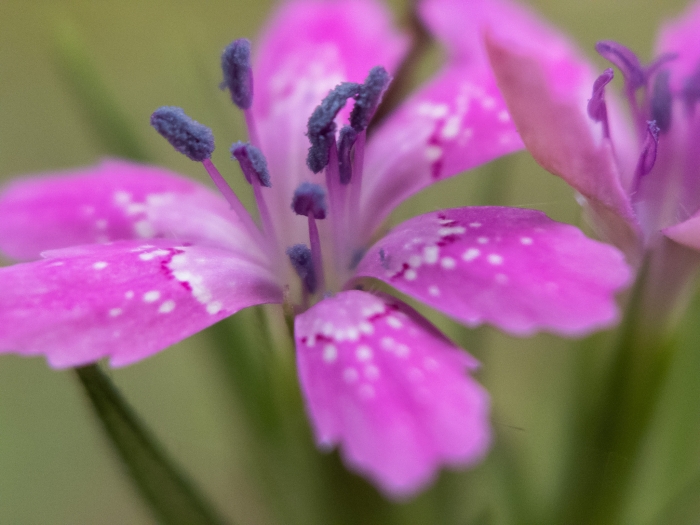Deptford Pink
(Dianthus armeria)
Deptford Pink (Dianthus armeria)
/
/

Scott Morris
CC BY 4.0
Image By:
Scott Morris
Recorded By:
Copyright:
CC BY 4.0
Copyright Notice:
Photo by: Scott Morris | License Type: CC BY 4.0 | License URL: http://creativecommons.org/licenses/by/4.0/ | Rights Holder: Scott Morris | Publisher: iNaturalist | Date Created: 2023-06-29T20:43:07Z |









Estimated Native Range
Summary
Dianthus armeria, commonly known as Deptford pink, is an annual or biennial herb native to Europe and naturalized in parts of North America. It is typically found in open grasslands, meadows, and disturbed sites, such as roadsides and waste areas. In its native habitat, it prefers well-drained, sandy or loamy soils and is often found in areas with calcareous ground. The plant grows up to 24 inches tall and features slender stems, narrow, hairy dark green leaves, and a profusion of deep-pink flowers with distinctive white spots that bloom from June to August. The flowers are small but quite showy due to their bright coloration.
Deptford pink is appreciated for its charming flowers and is used in wildflower gardens, meadow plantings, and as a filler in borders due to its upright growth habit. It is relatively low-maintenance, requiring minimal care once established, and can tolerate drought conditions. It prefers full sun but can also grow in partial shade. While it can self-pollinate, it also attracts pollinators like bees and butterflies, adding to its value in a biodiversity-friendly garden. However, gardeners should be cautious as Dianthus armeria can become invasive outside its native range, and it is advisable to check local regulations before planting.CC BY-SA 4.0
Deptford pink is appreciated for its charming flowers and is used in wildflower gardens, meadow plantings, and as a filler in borders due to its upright growth habit. It is relatively low-maintenance, requiring minimal care once established, and can tolerate drought conditions. It prefers full sun but can also grow in partial shade. While it can self-pollinate, it also attracts pollinators like bees and butterflies, adding to its value in a biodiversity-friendly garden. However, gardeners should be cautious as Dianthus armeria can become invasive outside its native range, and it is advisable to check local regulations before planting.CC BY-SA 4.0
Plant Description
- Plant Type: Herb
- Height: 1-2 feet
- Width: 0.5-1 feet
- Growth Rate: Moderate
- Flower Color: Pink
- Flowering Season: Summer, Spring
- Leaf Retention: Deciduous
Growth Requirements
- Sun: Full Sun
- Water: Medium
- Drainage: Medium
Common Uses
Border Plant, Butterfly Garden, Deer Resistant, Drought Tolerant, Low Maintenance
Natural Habitat
Native to open grasslands, meadows, and calcareous grounds in Europe
Other Names
Common Names: Wild Pink, Grass Pink
Scientific Names: , Dianthus armeria, Caryophyllus armerius, Cylichnanthus maculatus, Dianthus armeria f. acaulis, Dianthus armeria f. alba, Dianthus armeria f. albiviridis, Dianthus armeria f. caespitosa, Dianthus armeria f. glabrissimus, Dianthus armeria f. latiusculus
GBIF Accepted Name: